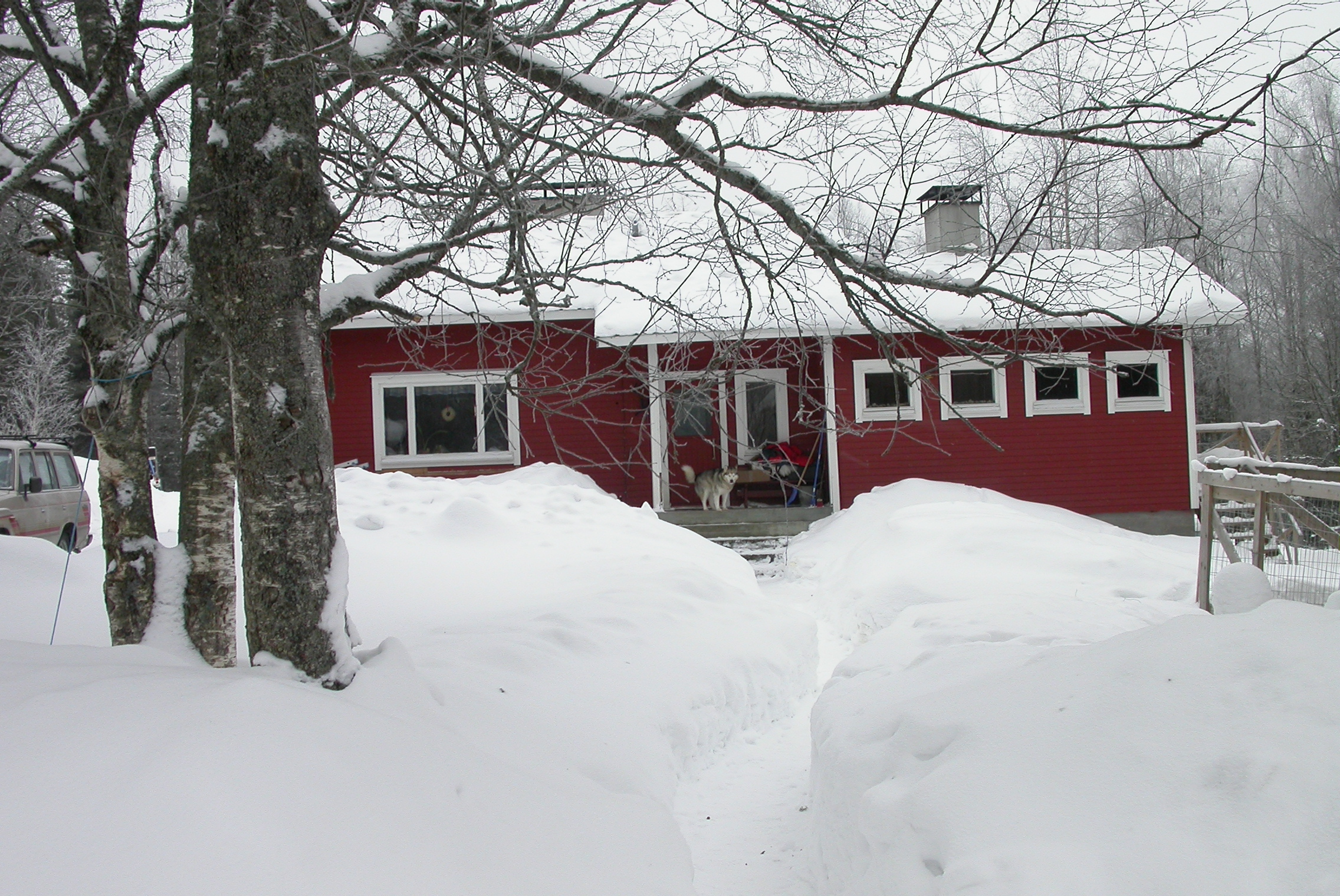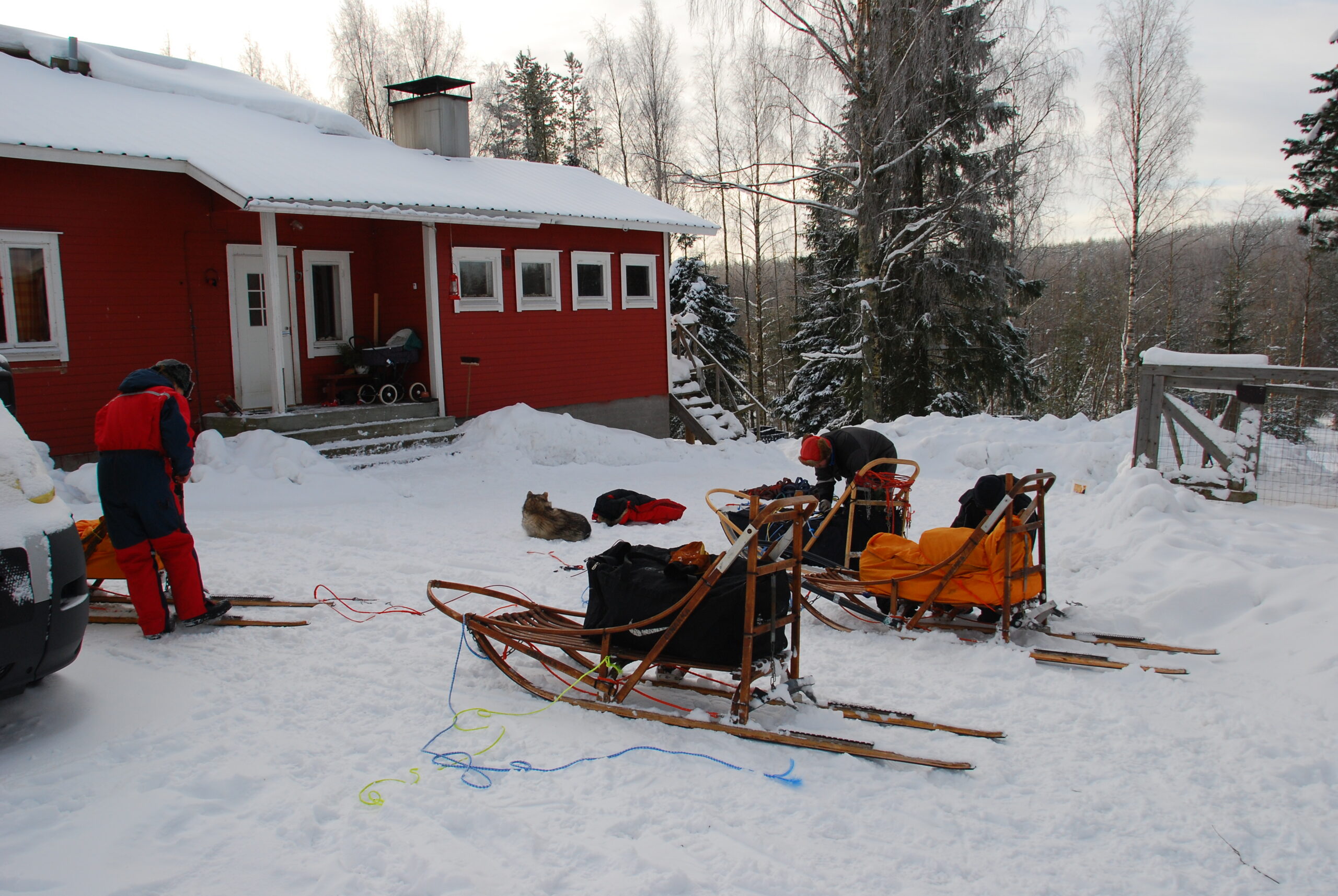The Haunted Kennel: How We Moved Into Lieksa’s Darkest Secret
Halloween is a time for ghost stories, haunted houses, and whispered legends told in the dark. Usually, we enjoy those tales around a campfire, safe in the knowledge they’re just stories. But once upon a time, when we moved to Lieksa, we discovered that our own home came with a chilling true crime tale … one that every local already knew.
When we first moved to Lieksa, we were just looking for a quiet, remote spot to start our dream. And oh boy, did we find remote. The farm we bought was tucked 40 kilometres from Lieksa town centre, down the tail end of a scenic, winding road, ” perched along the top of an esker ridge. It was beautiful. It was isolated. It was perfect. The nearest real neighbour was five kilometres away. We had a national park on one side and endless silence on the other.
To give you an idea: in winter, if we heard a car on the road, we’d drop what we were doing and go peek. One or two cars per day was the norm. The mail van showing up twice a week was our dose of social contact. We weren’t just off the beaten track. We were so far off it, the track had forgotten we ever existed.
But there was one detail the real estate agent failed to mention when we signed the paperwork. A small thing, really. Just a tiny footnote in the history of the place.
Turns out, the house was the site of the most infamous mass murder in Lieksa.
Yes. That’s right. We unknowingly bought the most talked-about crime scene in the region. A remote, eerie house with, let’s say, a bit of a reputation.
The previous occupants were known around the area. Let’s just say they had a reputation for being … colourful. The father was into moonshine (homemade booze was his side hustle) and they generally lived on the fringe of legality.
One day, the daughter of the house started dating a local guy. At first, the father actually welcomed him. They brewed moonshine together, shared questionable hobbies, and all seemed fine. Until the boyfriend took a darker turn and started getting into more serious criminal behaviour. (Serious, in this case, meaning rural petty theft like stealing tractor batteries.)
The father drew the line. A massive argument followed. The boyfriend was kicked out. The daughter stayed. And the boyfriend did not take it well.
Fueled by alcohol and rage, he returned to the house with a stolen Kalashnikov. Yes, really. He forced the daughter and their baby to wait outside. Then he shot the father and mother, and shot the brother as he tried to escape down the road. He made the daughter clean up the aftermath.
At some point during the chaos, she managed to toss the weapon out of the car window as they left for town. When they arrived, she used a clever excuse to slip away at the pharmacy and alert the authorities. Meanwhile, the murderer wandered into a local bar, ordered a drink, and listened to the police sirens blaring in the distance. The next day, he turned himself in. He confessed, went to prison, and eventually died of a drug overdose.
So there we were, living in a house that every local seemed to know. We’d introduce ourselves to someone new, and they’d ask where we lived. We’d say, “Oh, out in Conamara.” And there would always be that pause. Then: “Ohhh. That place.”
Someone even pointed out the bullet holes in the walls.
But despite its dark past, the house gave us many good years. It may have felt a bit cursed at times, but it was also full of life, laughter, hard work, and new beginnings. The dogs didn’t seem to mind. The forest didn’t care. And we were too busy building something beautiful to be haunted for long.
So yes, we accidentally bought a house with a murderous past. But in our time there, we filled it with a very different kind of history, the kind that involves dogs, dreams, and a whole lot of firewood.
— Valentijn Beets & Veronika Butinova
Bearhill Husky






